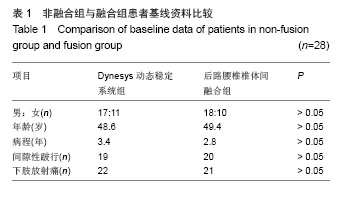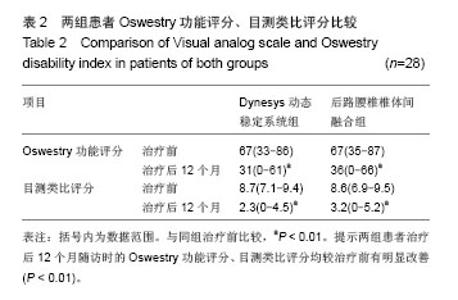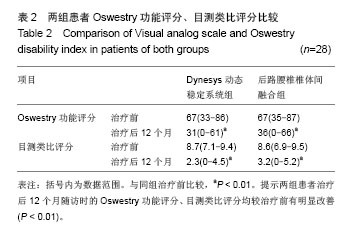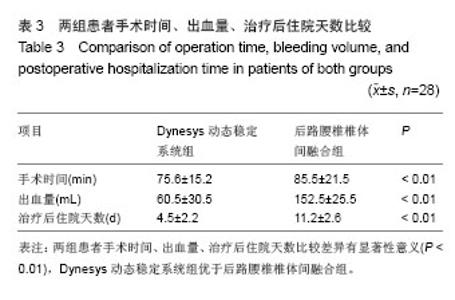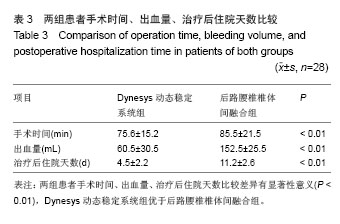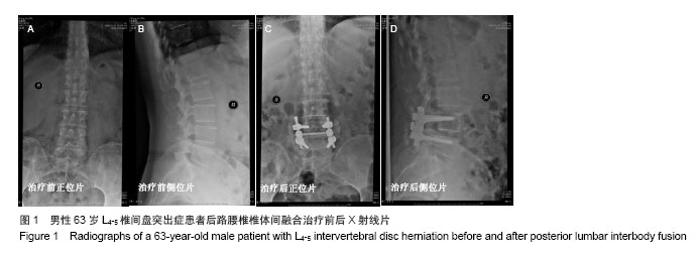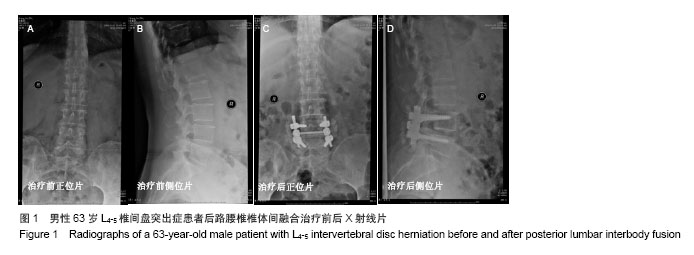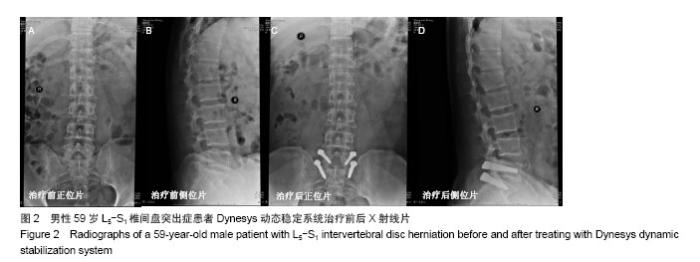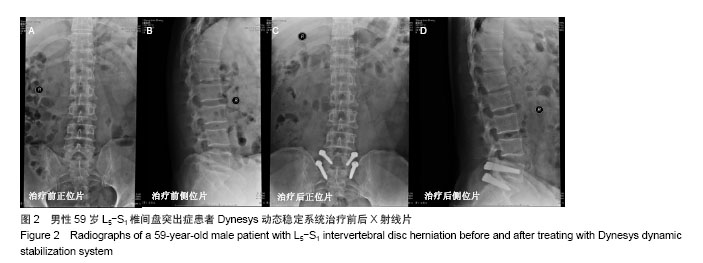| [1]Dickerman RD, Reynolds AS, Zigler J, et al. Adjacent-segment degeneration. J Neurosurg Spine. 2009; 10(2):177.
[2]Eck JC, Humphreys SC, Hedges SD. Adjacent-segment degeneration after lumbar fusion:a review of clinical, biomechanical, and radiologic studies. Am J Orthop. 1999; 28(6):336-340.
[3]Rohlmann A, Burra NK, Zander L, et al. Comparison of the effects of bilateral posterior dynamic and rigid fixation devices on the loads in the lumbar spine:a finite element analysis. Eur Spine J. 2007;16(8):1223-1231.
[4]Gaines RW. The use of pedicle-screw internal fixation for the operative treatment of spinal disorders. J Bone Joint Surg Am. 2000;82A(10):1458-1476.
[5]Fairbank JC.Oswestry disability index.J Neurosurg Spine. 2014; 20(2):239-241.
[6]Huskisson EC. Measurement of pain. Lancet. 1974;2(7889): 1127-1131.
[7]杨惠林,唐天驷.腰椎不稳与腰椎管狭窄专题研讨会纪要[J].中华骨科杂志,1994,14(1):60-61.
[8]Schwarzenbach O, Berlemann U, Stoll T. Posterior dynamic stabilisation systems:DYNESYS. Orthop Clin North Am. 2005; 36(3):363-372.
[9]Dubois G. Dynamic stabilization with the Dynesys system and the dynamic transition option DTO implant:philosophy- concept-surgical technique. Interact Surg. 2008;3(4):239-244.
[10]Schmoelz W,Huber JF, Nydegger L, et al. Influence of a dynamic stabilisation system on load beating of a bridged disc:an in vitro study of intradiscal pressure. Eur Spine J. 2006;15(8):1276-1285.
[11]Stoll TM, Dubois G, Schwarzenbach O. The dynamic neutralization system for the spine: a multi-center study of a novel nonfusion system. Eur Spine J. 2002;11(2): 170-178.
[12]陈博来,许鸿智,林颖.动态稳定系统(Dynesys)的临床研究[J].脊柱外科杂志,2010,8(6):372-376.
[13]张劲松, 杨述华,许伟华,等.减压结合Dynesys 动态稳定治疗退行性腰椎管狭窄症[J].中国矫形外科杂志, 2010, 21(11) : 881-883.
[14]Legaye J. Unfavorable influence of the dynamic neutralization system on sagittal balance of the spine. Rev Chir Orthop Reparatrice Appar Mot. 2005;91:542-550.
[15]Lawhorne YW, Girardi FP, Mina CA, et al. Treatment of degenerative spondylolisthesis: potential impact of dynamic stabilization based on imaging analysis. Eur Spine J. 2009;18: 815-822.
[16]Schnake KJ, Schaeren S, Jeanneret B. Dynamic stabilization in addition to decompression for lumbar spinal stenosis with degenerative spondylolisthesis. Spine. 2006;31(4):442-449.
[17]Greb D, Benini A, Junge A. Clinical experience with the Dynesys semirigid xation system for the lumbar spine:surgical and patient-oriented outcome in 5O cases after all average of 2 years. Spine. 2005;30(3):324-331.
[18]Haddad B, Makki D, Konan S, et al. Dynesys dynamic stabilization:less good outcome than lumbar fusion at 4-year follow-up. Acta Orthop Belg. 2013;79(1):97-103.
[19]Yu SW, Yang SC, Ma CH, et al. Comparison of Dynesys posterior stabilization and posterior lumbar interbody fusion for spinal stenosis L4L5. Acta Orthop Belg. 2012;78(2): 230-239. |

